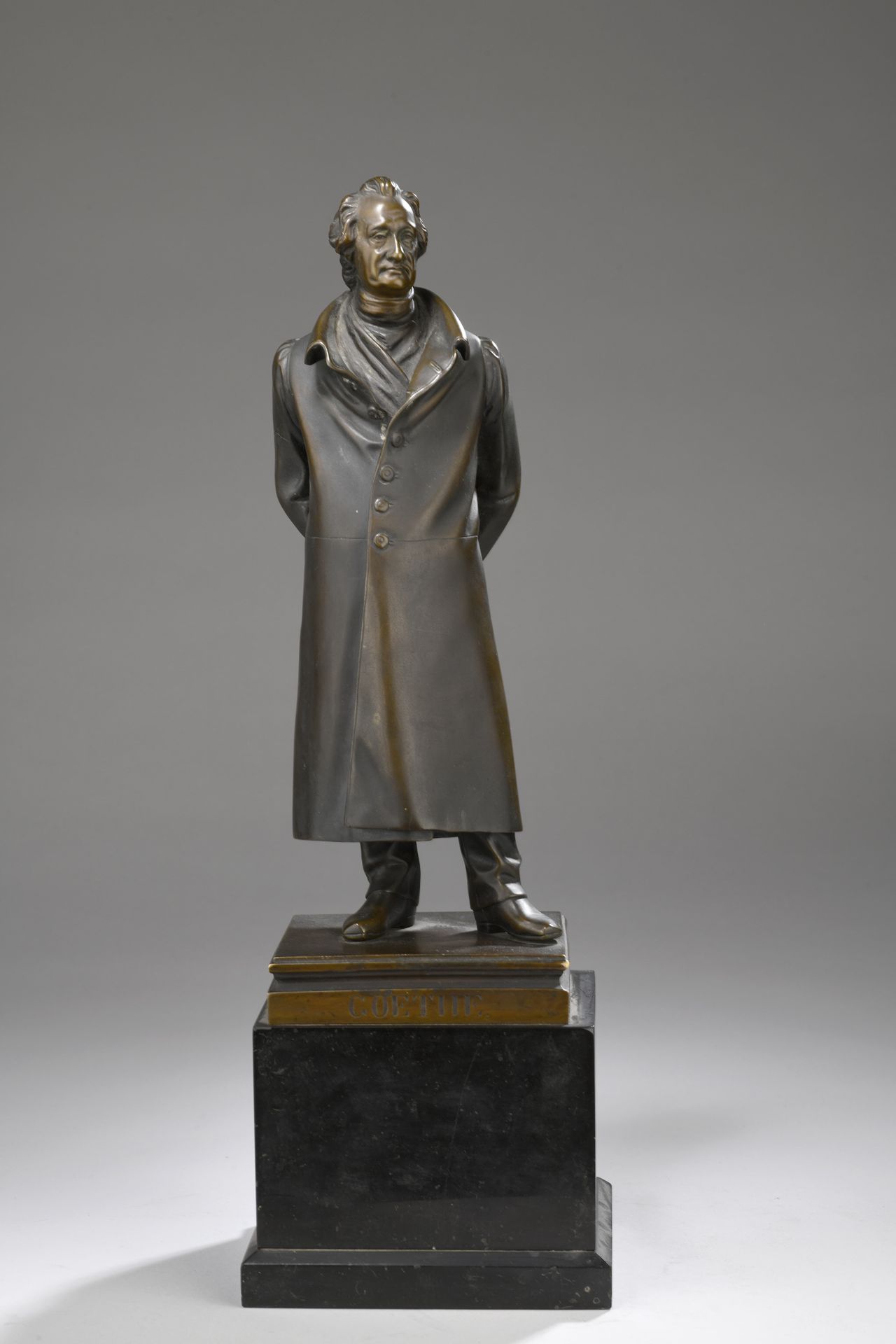Description
Christian Daniel Rauch (1777-1857) Johann Wolfgang von Goethe (1759-1832) Model created in 1828 Bronze with light-brown patina Signed "Ch. RAUCH Titled "Goethe" on the front H. 30 cm, on a black Belgian marble base H. 10 cm Related works : -Christian Daniel Rauch, Johann Wolfgang von Goethe, 1828, plaster statuette, H. 37 cm, Paris,Musée de la Vie romantique, inv. CSR S 7 ; -Christian Daniel Rauch, Goethe, 1820, bronze bust, H. 65 cm, Paris, Musée de la Vie romantique, inv. 2013.4. Related literature: -Bernhard Maaz, Nationalgalerie Berlin: das XIX. Jahrhundert: Besandskatalog der Skulpturen, Berlin, Staatliche Museen, 2006, pp. 510-512. Christian Daniel Rauch began his training as an apprentice sculptor at the court of King Friedrich Wilhelm III in the 1790s. In 1797, he was appointed valet to the king. Queen Louisa of Prussia saw in Rauch a promising sculptor. Between 1805 and 1811, the young Rauch was sent to Rome to study antiquity on a scholarship from the King of Prussia. There, he met sculptors Thorvaldsen and Canova, who were to convert him once and for all to the neoclassical aesthetic.
89
Christian Daniel Rauch (1777-1857) Johann Wolfgang von Goethe (1759-1832) Model created in 1828 Bronze with light-brown patina Signed "Ch. RAUCH Titled "Goethe" on the front H. 30 cm, on a black Belgian marble base H. 10 cm Related works : -Christian Daniel Rauch, Johann Wolfgang von Goethe, 1828, plaster statuette, H. 37 cm, Paris,Musée de la Vie romantique, inv. CSR S 7 ; -Christian Daniel Rauch, Goethe, 1820, bronze bust, H. 65 cm, Paris, Musée de la Vie romantique, inv. 2013.4. Related literature: -Bernhard Maaz, Nationalgalerie Berlin: das XIX. Jahrhundert: Besandskatalog der Skulpturen, Berlin, Staatliche Museen, 2006, pp. 510-512. Christian Daniel Rauch began his training as an apprentice sculptor at the court of King Friedrich Wilhelm III in the 1790s. In 1797, he was appointed valet to the king. Queen Louisa of Prussia saw in Rauch a promising sculptor. Between 1805 and 1811, the young Rauch was sent to Rome to study antiquity on a scholarship from the King of Prussia. There, he met sculptors Thorvaldsen and Canova, who were to convert him once and for all to the neoclassical aesthetic.
